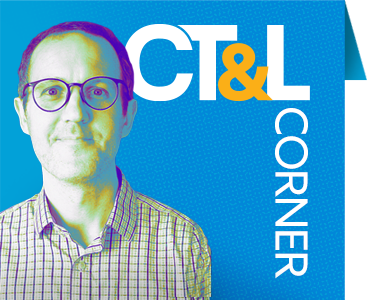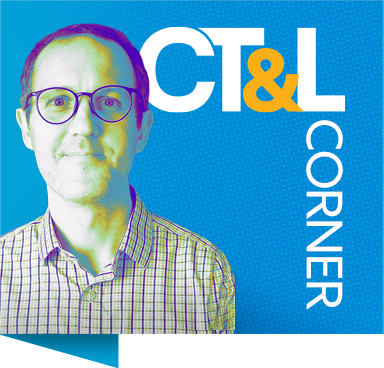Recently, someone shared a New York Times piece with me from Adam Grant (externally linked here), a bestselling author of nonfiction books on applying psychological research to lead more rewarding (re: successful) lives and help others do the same. Titled, “No, You Don’t Get An A for Effort,” Grant describes an increase in student demand for grades based on their perception of effort. Grant pins this phenomenon on our collective, uncritical embrace of popular psychology ideas like grit and the growth mindset. Both ideas rely on the idea of persistence and resilience through challenges, with laudable (if mixed) research. Yet, Grant thinks that we’ve mistaken a means (effort) for an end: we’ve come to worship work ethic for its own sake. He distinguishes effort from outcomes: “High marks are for excellence, not grit.”
For explanation, Grant points to our collective, uncritical embrace of popular psychology ideas like grit and the growth mindset, popularized by Angela Duckworth and Carol Dweck, respectively. Both ideas rely on the idea of persistence in the face of challenges, with growth mindset materials encouraging people to embrace the power of ‘yet:’ you haven’t done x/y/z… yet. Further, parents/teachers/managers are encouraged to praise for effort (“You must’ve worked hard on this!”) rather than for ability (“You must be so smart!”). Yet, as I’ve pointed out elsewhere, Carol Dweck herself notes that a growth mindset is about more than effort: if a student continues to put in effort (“Nice try!”) without an improvement in results, they may conclude that they’re just not good enough. Grant concludes something similar, with an additional prescriptive twist: “Trying harder isn’t always the answer. Sometimes it’s working smarter, and other times it’s working on something else altogether.” Where do we go from here?
To Grant’s credit, he acknowledges that a student’s experiencing a misalignment between effort and outcome can be the result of multiple factors: “If many students are working hard without succeeding, it could be a sign that the teacher is doing something wrong: poor instruction, an unreasonable workload, excessively difficult standards or unfair grading policies.” A willingness to consider our role in this mismatch allows us to adapt: how did we calculate our expectations in terms of workload (though geared towards more text-based academic subjects, Betsy Barre’s Workload Estimator is an interesting tool to consider). Jamiella Brooks and Julie McGurk caution us against confusing logistical rigor (more readings, longer papers, more work) with intellectual rigor (engaging with course material at a high level, however much (or little) there is). Similarly, our grading practices are another place where we can find ourselves a mismatch with students: Grant’s insistence that only the learning outcomes matter is logical, and anyone who argues for grades based on (perceived) effort does open a well of subjectivity and potential for bias.
“But I worked so hard…” is a very understandable refrain when students receive a grade that’s less than what they expected. We can be incredulous, skeptical, and downright flummoxed: (“If you worked so hard, then why did you turn in this?”). Acknowledging students’ efforts isn’t the same thing as changing their grade, but this acknowledgement meets students where they are. From there, we can begin a conversation about their definition of ‘effort’ and our expectations of them. When my students say they practiced, I believe them, but I get curious about what that practice looks like: did they simply repeat the assigned pieces over and over (which, to be entirely fair, is exactly what I did when I was a young piano student)? If my goal is for students to practice more efficiently, I’ve come to find that I often need to show them what that looks like.
While it may be easy to conclude that students just need to learn and do the right things when it comes to studying (students often focus on ineffective strategies like rereading or highlighting), researchers from Colorado State like to suggest that learning can often be counterintuitive: what feels like it works does not always work, and vice versa. Louis Deslauriers and colleagues found that students believed they learned more in a smoothly delivered lecture (like a TED Talk), when the data suggested that they learned more engaging active learning. In other words, engaging in more effortful activities like self-testing are beneficial while simultaneously feeling less effective (it can feel like you don’t have a real grasp of the material). If we want students to learn in more effortful ways, we may need to acknowledge that effort, whether or not we grade it.
Grant is correct that trying harder isn’t always the answer, and he could’ve stopped there. Yes, we can ‘work smarter,’ but that’s not always self-evident. Artwork may involve work, but it’s not only work: it involves play, experimentation, time, and space. It doesn’t lend itself to the logical efficiencies of a phrase like ‘work smarter.’ Given this additional wrinkle, Grant’s point that there are multiple factors in play can help us consider what factors contribute to mismatches between our expectations and students’ sense of their own effort. We can have conversations about the reasonable time expectations for assignments, we can ask for feedback about how our students prepared for and completed work. We do this not because we want to give a grade for effort or process, but because understanding how students experience their work is a valuable piece of information in helping them improve. They may not get an A for effort, but dismissing effort is a road to nowhere.


